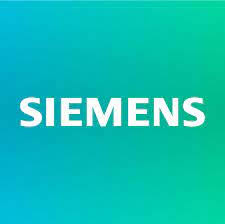Batch Tracking Software
Batch tracking software is a crucial component of Manufacturing Operations Management (MOM) and Laboratory Information Management Systems (LIMS).
It enables manufacturers to monitor and manage groups of products or samples that share similar characteristics throughout the production process and supply chain.
Batch Tracking Challenges
Manufacturers face significant challenges with manual, paper-based batch record processes, including poor data integrity that leads to errors and production delays, limited tracking capabilities that hinder the identification of quality issues and corrective actions, and disconnected systems that create bottlenecks and reduce operational visibility.
What is Batch Tracking Software?
Batch tracking software is a digital solution that automates the process of assigning unique batch numbers to groups of products or samples.
It provides end-to-end traceability, leaving a trail of production and logistics data as items move through the supply chain. The software enables real-time operational visibility, optimization, and the ability to track manufacturing changes effectively.
Batch Tracking Features
Automated Batch Number Generation
The software automatically generates and assigns batch numbers to manufactured goods, which can be customized to include various information such as manufacturing date and expiration date.
LoT Tracking
It provides real-time operational visibility through analytics and in-process dashboards, allowing manufacturers to monitor the status of batches throughout the production process.
QMS Integration
Batch tracking software can be integrated with QMS to ensure the use of correct, current versions of SOPs and work instructions, as well as enable the launch of deviations directly from the electronic batch record (EBR).
Batch Tracking Benefits
Regulatory Compliance
Batch tracking simplifies meeting regulatory requirements by maintaining detailed records of manufacturing processes and distribution.
Enhanced Quality Control
It enables manufacturers to identify and isolate quality issues quickly, improving overall product quality.
Efficient Recall Management
In case of a recall, the software allows for quick identification and communication with affected parties in the supply chain.
Expiration Date Management
Batch tracking facilitates easy monitoring of expiration dates, enabling better inventory management and targeted promotions.
Improved Inventory Sequencing
It enables automated inventory-sequencing strategies like FIFO or FEFO, maximizing inventory value and minimizing waste.
Supply Chain Optimization
By tracking which materials contribute to superior batches, manufacturers can make informed decisions about supplier selection, leading to better quality products overall.
Siemens Opcenter RD&L
Snic Solutions is recognized as one of the elite organizations partnered with Siemens as a value-added reseller of Opcenter.
/About%20Page/Blake%20Digital%20Transformation%20Solutions.png?width=500&height=500&name=Blake%20Digital%20Transformation%20Solutions.png)

Software Integration
Batch tracking software plays a vital role in smart manufacturing by integrating seamlessly with systems like MOM (Manufacturing Operations Management), LIMS (Laboratory Information Management Systems), ERP, and QMS (Quality Management Systems). This integration transforms traceability from a siloed task into a unified, real-time data ecosystem.
What happens when you integrate?
Integrating batch tracking software synchronizes production, testing, and logistics data—boosting accuracy, expanding visibility, and streamlining compliance. This connected approach empowers manufacturers to quickly identify issues, maintain product integrity, and make better quality decisions across the entire lifecycle.
From Our Blog
Stay up to date with what is new in our industry, learn more about the upcoming products and events.

How is a Gantt Chart Used in Manufacturing Process?
In manufacturing, Gantt charts are used to simplify production by visualising task…
.png)
Top Advantages of Laboratory Automation Systems
Are you curious about how laboratory automation can benefit your lab? Laboratory a…
.png)
What Is A Bidirectional LIMS?
LIMS bidirectional communication, or what is LIMS bidirectional, refers to the two…
Frequently Asked Questions
Have Question? We are here to help
How does batch tracking software improve regulatory compliance?
Batch tracking software helps improve regulatory compliance by ensuring accurate and detailed records of each batch produced, including timestamps, ingredients, production steps, and quality checks. It automates documentation and generates audit trails that are easily accessible for inspections, helping manufacturers meet industry standards and regulatory requirements efficiently.
What are the main challenges manufacturers face with batch tracking?
Manufacturers face several challenges with batch tracking, including inaccurate or incomplete record-keeping, difficulty in retrieving historical data, lack of real-time visibility into inventory and production processes, and the potential for human error when using manual systems. Additionally, integrating batch tracking with other systems and managing recalls can be complex.
How does batch tracking software handle recalls and RMAs?
Batch tracking software helps manage recalls and Return Merchandise Authorizations (RMAs) by providing detailed traceability of products from raw materials to finished goods. If a batch needs to be recalled, the software allows manufacturers to quickly identify and isolate affected products, notifying relevant stakeholders and ensuring that the recall process is efficient and compliant with regulations.
What features should I look for in a batch tracking software?
When selecting batch tracking software, look for features such as real-time tracking, automated documentation, integration with other systems (ERP, quality management), comprehensive audit trails, recall management capabilities, customizable reporting, and data visualization tools. A user-friendly interface and robust compliance management tools are also important.
How does batch tracking software optimize inventory management?
Batch tracking software optimizes inventory management by providing real-time visibility into stock levels, production progress, and the status of each batch. It helps minimize waste, avoid overproduction, and streamline inventory replenishment. Additionally, it allows for better forecasting and ensures the efficient use of materials, leading to reduced inventory costs and improved operational efficiency.
What is a batch in manufacturing?
A batch is a group of samples or products that behave similarly with respect to sampling or testing procedures and are processed as a unit.
How does batch tracking differ from lot tracking?
Batch tracking is specific to batch production workflows, while lot tracking can be applied to various production methods. Both contribute to product traceability.
Can batch tracking software integrate with existing systems?
Yes, many batch tracking solutions can integrate with existing MOM, LIMS, and quality management systems to provide comprehensive traceability.
Partner With Us To Reduce Your Technical Debt
Snic Solutions is recognized as one of the elite organizations partnered with Siemens as a value-added reseller of Opcenter.
/About%20Page/Blake%20Digital%20Transformation%20Solutions.png?width=500&height=500&name=Blake%20Digital%20Transformation%20Solutions.png)
